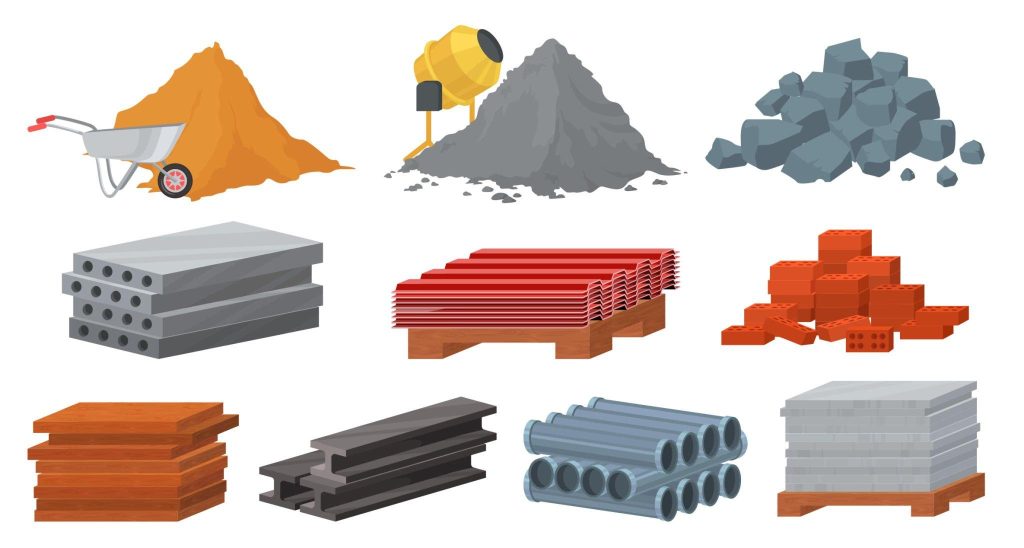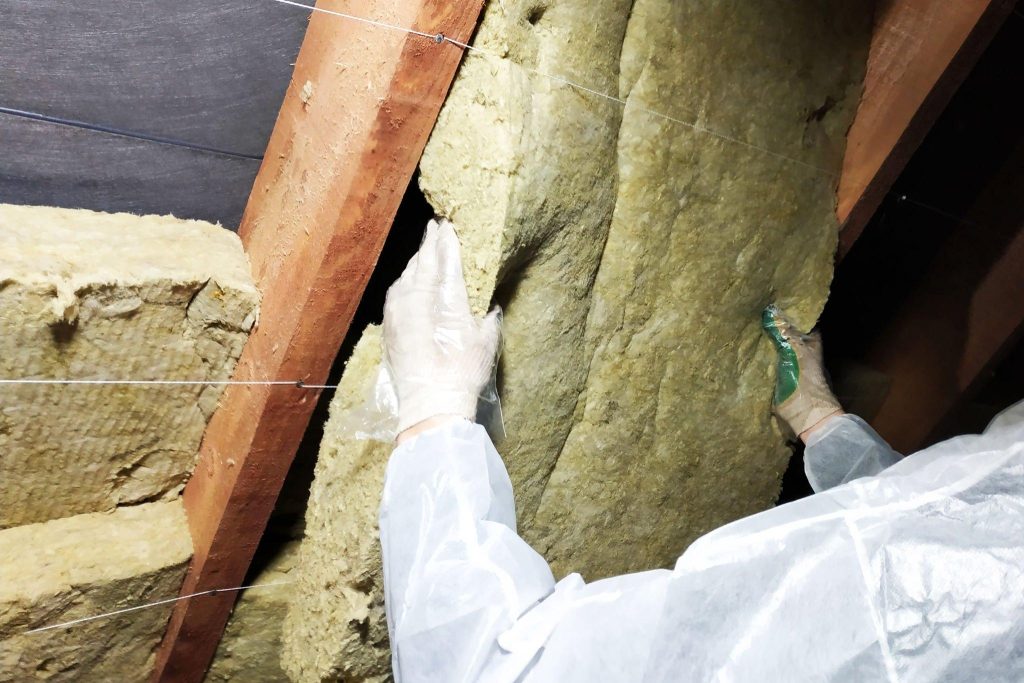- ALFRAN - OUR HOUSE BRAND
- Pipes
- Fittings
- Valves
- SOLAR PV SYSTEM
- Accessories
- Building Materials
- KITCHEN SERIES
- BATHROOM SERIES
- OTHERS - NON BUILDING MATERIALS
Choosing the Right Building Material for Fire-Resistant
July, 25 2023
Author: Unitrade
Share This With
When it comes to constructing a safe and secure building, one of the most critical factors to consider is its ability to withstand fire incidents. Fires can pose significant threats to both life and property, making it essential for builders and homeowners alike to prioritize fire-resistant construction. The key to achieving this lies in choosing the right building material that offer optimal fire protection without compromising on structural integrity.
Fire-resistant materials are substances that have been intricately crafted to withstand the destructive impact of fire and impede its propagation. These materials exhibit unique characteristics that render them resistant to ignition, combustion and the transfer of heat.
They are deliberately engineered to endure elevated temperatures and find widespread applications in sectors such as construction and manufacturing, where the prevention of fire hazards is of utmost importance.
To enhance their fire resistance capabilities, choosing the right building material is vital because fire-resistant materials are often imbued with additives or coated to exhibit features such as self-extinguishing properties or a reduced propensity for flame spread.
Fire-retardant materials, on the other hand, are treated with specific chemicals that delay ignition or decrease the rate of combustion when confronted with flames. Non-combustible materials, in contrast, exhibit a remarkable resistance to burning and flame propagation, even in the presence of intense heat. They do not undergo combustion in regular circumstances.

Standards and certifications serve as vital mechanisms for verifying the dependability and efficacy of fire-resistant materials. Numerous organisations and regulatory bodies define criteria and testing protocols to evaluate the fire resistance of materials. These standards encompass assessments of flame propagation, smoke generation, heat emission and the capacity to endure fire for predetermined durations.
Prominent certifications include UL (Underwriters Laboratories), ASTM (American Society for Testing and Materials) and EN (European Norms) standards. Adherence to these standards and certifications assures consumers, architects and construction professionals that fire-resistant materials fulfil particular safety criteria and have undergone meticulous testing procedures. (https://int-enviroguard.com/blog/safety-standards-and-how-compliance-works/)
Fire-Resistant Material 1: Fire-Resistant Glass and Fibreglass
Fire-resistant glass is a distinct variant of glass that is purposefully engineered to endure the effects of fire and extreme temperatures without fracturing or facilitating the propagation of flames. Its composition involves the incorporation of multiple layers of glass, which are interspersed with interlayers comprising fire-resistant materials like tempered or laminated glass.
Common fire ratings encompass designations like E (integrity only), EW (integrity with limited heat transfer) and EI (integrity with limited heat transfer and insulation). Multiple organisations and standards bodies, such as the International Organization for Standardization (ISO) and national fire safety entities, are responsible for establishing and enforcing these standards. (https://albursa.com/blogs/view/23/what-are-fire-resistance-ratings-and-how-to-measure-them)
Fire-resistant glass and fibreglass are not the same materials, but they both have properties that make them useful in fire safety and protection applications. Fibreglass tape, which you can find at UNITRADE store, is generally considered to be fire-resistant or fire-retardant to a certain extent. The glass fibres used in fibreglass materials, including fibreglass tape, have a high melting point and do not readily catch fire. However, it’s important to understand that while fibreglass tape may resist ignition and combustion, it can still be affected by extreme heat.
Fire-Resistant Material 2: Gypsum Board
Gypsum board, also referred to as drywall or plasterboard, is a prevalent construction material consisting of a gypsum core enclosed by layers of paper or fibreglass. The gypsum core imparts remarkable fire-resistant properties to gypsum board, rendering it an indispensable component for constructing fire-rated walls and ceilings.
The gypsum itself is inherently non-combustible, meaning it does not contribute to the propagation of flames. When subjected to fire, gypsum board releases moisture in the form of water vapour from its crystalline structure. This moisture absorption capability effectively retards the temperature rise and diminishes the transfer of heat to the opposing side of the wall or ceiling.
Gypsum board is cost-effective, widely accessible, and straightforward to install, making it a preferred choice for fire-rated construction projects. Moreover, gypsum board exhibits exceptional fire resistance, effectively confining fires and inhibiting their spread within a building. It also contributes to sound insulation, enhancing acoustic properties within the space.
Gypsum board offers exceptional versatility, enabling various finishes, textures, and decorative treatments, thereby elevating the visual aesthetics of fire-rated walls and ceilings. Additionally, it is a durable material that necessitates minimal upkeep, further augmenting its appeal for fire-rated applications.
Fire-Resistant Material 3: Concrete
Fire-resistant concrete, like ready mix concrete, is a type of concrete that is designed to withstand high temperatures and the damaging effects of fire. This type of concrete is produced using specific ingredients and additives that boost its ability to withstand heat and inhibit the spread of fire. It has unique properties suited for fire resistance. Its thick and compact construction efficiently prevents heat and flame penetration.
Because of its high heat capacity, concrete can absorb and hold a large quantity of heat energy before reaching a critical temperature. Furthermore, because of its low thermal conductivity, heat movement within the material is slow. These characteristics make fire-resistant concrete an extremely efficient barrier against flames, ensuring structural stability and integrity during fire accidents.
It is often utilised in locations such as fire-rated stairwells, lift shafts and structural fireproofing. High-rise structures can improve their fire safety requirements and provide residents with a safer environment in the case of a fire by integrating fire-resistant concrete, especially high-rise buildings.
Furthermore, fire-resistant concrete is used in a variety of infrastructure projects, such as subterranean stations, underground parking lots and transit hubs. Fire-resistant materials are required in these areas to maintain occupant safety and to protect key infrastructure components.
Fire-Resistant Material 4: Fire-Resistant Insulation

Fire-resistant insulation is a type of material that is meant to endure high temperatures and defend against the damaging effects of fire. This insulation is designed with certain ingredients and additives that boost its capacity to withstand heat and inhibit the spread of flames, giving it distinctive fire resistance features.
The tight and compact composition of fire-resistant insulation prevents heat and flame infiltration, creating an efficient barrier against fire incidents. It has remarkable thermal qualities, which contribute to its durability in high-temperature situations. Because of the insulation’s high heat capacity, it may absorb and hold a significant quantity of heat energy before reaching critical temperatures.
Fire-Resistant Material 5: Fire-Resistant Roofing Materials
Fire-resistant roofing materials, such as clay tiles, metal and asphalt shingles, are specifically engineered to withstand the effects of fire and minimise the likelihood of ignition and fire propagation on rooftops. Clay tiles, crafted from natural materials, possess exceptional fire-resistant properties attributable to their composition and manufacturing techniques.
Metal roofing, typically constructed from steel or aluminium, is inherently non-combustible and offers remarkable fire resistance. While asphalt shingles do not possess innate fire resistance, they can be treated with fire-retardant coatings to enhance their ability to withstand fire.
Other factors to contemplate are architectural style, budget constraints, and the climate of the area. Regular maintenance is vital to uphold the fire-resistant qualities of the roof. This entails inspecting the roof for any damage, such as cracks or missing tiles and promptly addressing them through repairs or replacements. Keeping the roof clean and clear of debris is also essential to prevent potential fire hazards.
Comparative Analysis of Fire-Resistant Building Materials
Fire-resistant concrete, for instance, offers exceptional durability and the ability to endure high temperatures. However, it can be burdensome in terms of weight and susceptible to cracking when exposed to extreme heat. Fire-resistant glass provides transparency and effective heat insulation but may carry a higher price tag and possess a lower impact resistance compared to alternative materials.
Fire-resistant gypsum board, on the other hand, is relatively affordable and easy to install but may necessitate additional fireproof coatings to ensure optimum protection. Each material boasts its unique properties and constraints, and their suitability relies on the specific application and desired outcomes.
Costs can fluctuate significantly depending on the specific material and its accessibility. Maintenance requirements vary as well, with certain materials demanding regular inspections, repairs, or specialised cleaning procedures. Longevity is another factor that exhibits discrepancies, with some materials boasting extended lifespans while others necessitate more frequent replacement or refurbishment. It is vital to assess the overall cost of ownership, incorporating installation, maintenance and replacement expenses, to make a well-informed decision based on budget constraints and long-term sustainability.
The fire rating and performance of the material should align with the desired level of fire resistance and comply with relevant local building codes. The material’s properties, including its capacity to endure high temperatures, resistance to impact, and insulation capabilities, should also be carefully assessed.
Compatibility with the existing structure and the ease of installation are vital practical considerations. Furthermore, factors such as cost, availability, aesthetics, and environmental impact should be factored in to ensure the selected material aligns with the project’s requirements and objectives.
In the nutshell, fire-resistant concrete is lauded for its durability and ability to withstand high temperatures, while fire-resistant glass offers transparency and effective insulation. Additionally, fire-resistant gypsum board is recognized for its cost-effectiveness and simplicity of installation.
It is highly encouraged to seek guidance from professionals and strictly adhere to local building codes and regulations when incorporating fire-resistant materials. Professionals, including architects, engineers, and fire safety experts, are equipped with the expertise needed to recommend appropriate fire-resistant materials and ensure compliance with regulations.
Conforming to local building codes and regulations ensures that the construction project adheres to the prescribed fire safety standards, facilitating the optimal utilisation of fire-resistant materials and thereby maximising the level of protection.
-
Category
Fire Safety -
Tags
The Importance of Education and Training to Enhance Fire Safety
Read moreFire Certificates in Malaysia and Guidance on Flexible Hose Fittings
Read moreChoosing the Right Building Material for Fire-Resistant
Read moreBest Practices for Creating a Fire-Safe Environment in Malaysia
Read moreExploring Common Fire Protection Systems for Enhanced Safety
Read morenewsletter Subscription
Sign Up Now & Stay Tune With Our Latest News & Product Updates!
